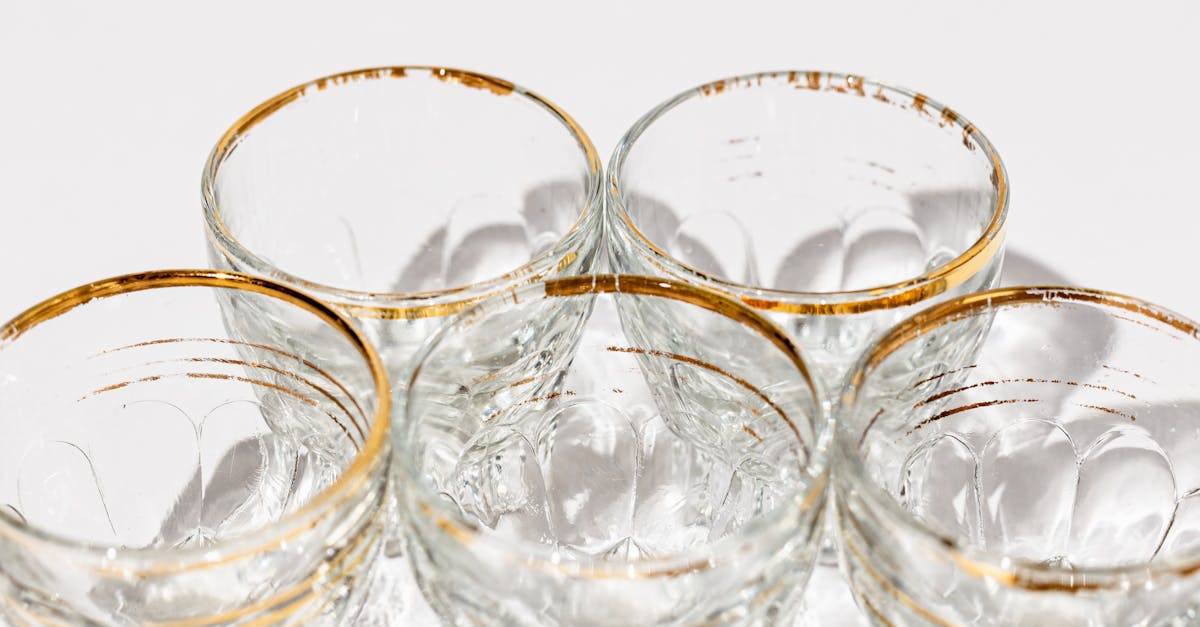Unveiling the Secrets of Gold: A Journey Through Carats and Purity

For centuries, gold has captivated humanity with its alluring brilliance and enduring allure. This precious metal holds a prominent place in cultures worldwide, adorning jewelry, embellishing artifacts, and serving as a stable investment. As you embark on your journey into the world of gold, a comprehensive understanding of its purity and quality is essential. This guide will illuminate the intricacies of carats, fineness, and purity, empowering you to navigate the spectrum of gold options with confidence and discernment.
Beyond its captivating aesthetics, gold’s versatility stems from its unique properties. Its malleability allows for intricate craftsmanship, while its durability ensures longevity, making it an ideal choice for both adornment and investment. Understanding the purity of gold empowers you to make informed decisions, ensuring that your gold purchases align with your specific needs, preferences, and budget.
Throughout history, gold has served as a symbol of wealth, status, and enduring value. As you delve into the nuances of its purity, you will gain a deeper appreciation for this timeless metal. Whether you seek the radiant glow of pure gold or the practical durability of lower-karat options, this guide will serve as your trusted companion, illuminating the path to informed gold purchases.
- Gold purity is measured in carats (kt) or fineness (parts per thousand).
- Higher-karat gold has a higher percentage of pure gold and is softer, while lower-karat gold is more durable.
- The choice of gold purity depends on the intended use and personal preferences.
- Lower-karat gold is more suitable for everyday wear, while higher-karat gold is better for special occasions or investments.
- **Proper care and storage can help maintain the beauty and longevity of gold jewelry.
1. Deciphering Carats: The Measure of Gold’s Purity
When you see a piece of jewelry labeled as 24-karat gold, it means that it is pure gold, containing 99.9% gold and no other metals. As the karatage decreases, so does the percentage of pure gold in the alloy. For instance, 18-karat gold contains 75% gold, while 14-karat gold contains 58.3% gold.
Understanding carats is essential for making informed gold purchases. It allows you to compare the purity and value of different gold items and choose the one that best suits your needs and budget. Knowing the karatage of your gold also helps you care for it properly, ensuring its beauty and longevity.
2. The Pinnacle of Purity: 24 Karat Gold

24-karat gold, also known as ‘pure gold’ or ‘fine gold,’ represents the highest echelon of gold purity, boasting an impressive 99.9% gold content. This exceptional purity renders 24-karat gold exceptionally soft and malleable, making it ideal for crafting intricate jewelry pieces. Its softness, however, also makes it more susceptible to scratches and dents, so it’s not the most practical choice for everyday wear.
Due to its high purity, 24-karat gold is often used in luxury jewelry, such as engagement rings and commemorative coins. It is also used in gold bullion, which is a form of investment. The high gold content of 24-karat gold makes it a valuable and sought-after commodity.
When it comes to jewelry, 24-karat gold is often alloyed with other metals, such as copper or silver, to increase its durability. This results in a lower karatage, but the gold remains valuable and beautiful.
3. Striking a Balance: 18 Karat Gold’s Versatility
18-karat gold is a popular choice for engagement rings, wedding bands, and other pieces of fine jewelry. It offers a beautiful golden hue that is slightly less intense than 24-karat gold, making it a more wearable option. It is also a good choice for investment purposes, as its high gold content retains its value over time.
Overall, 18-karat gold is a great option for those who want the beauty and value of gold without sacrificing durability. It is a versatile metal that can be used in a wide range of applications, from delicate jewelry to larger investment pieces.
4. Navigating the Spectrum of Gold Purity

Beyond the popular choices of 24-karat and 18-karat gold, a wide spectrum of gold purities exists, each tailored to specific applications and preferences. This range of purities allows for a diverse selection of gold items, from affordable and durable pieces to luxurious and exclusive ones.
14-karat gold, with its 58.3% gold content, offers a balance between affordability and durability. It is a great option for everyday jewelry, such as wedding bands, earrings, and necklaces. Its lower gold content makes it more affordable than higher-karat options, while still maintaining a significant amount of gold to ensure its value and beauty.
10-karat gold, with its 41.7% gold content, prioritizes durability above all else. It is often used in pieces that endure wear and tear, such as heavy jewelry, bracelets, and coins. Its higher alloy content makes it more resistant to scratches and dents, making it a practical choice for active lifestyles.
14 Karat Gold: A Balance of Value and Durability
14-karat gold, with its harmonious blend of 58.3% gold and 41.7% alloy, strikes a perfect balance between affordability and durability. This versatile metal is a popular choice for everyday jewelry, such as wedding bands, earrings, and necklaces. Its lower gold content makes it more affordable than higher-karat options, while still maintaining a significant amount of gold to ensure its value and beauty.
The durability of 14-karat gold makes it suitable for more intricate jewelry designs. It is strong enough to withstand everyday wear and tear, making it a great choice for active individuals and those who want their jewelry to last. The alloyed metals, often copper or silver, enhance the gold’s strength and durability without compromising its inherent beauty.
Overall, 14-karat gold is a great option for those who want the beauty and value of gold without sacrificing durability or breaking the bank. It is a versatile metal that can be used in a wide range of jewelry designs, from simple and elegant to more elaborate and intricate pieces.
10 Karat Gold: Durability at the Forefront
10-karat gold, with its robust 41.7% gold content, places durability at the forefront. This makes it an excellent choice for pieces that endure wear and tear, such as heavy jewelry, bracelets, and coins. Its higher alloy content, often copper or silver, enhances its strength and resistance to scratches and dents, making it a practical choice for active lifestyles and everyday use.
Despite its lower gold content, 10-karat gold still retains a significant amount of gold to ensure its value and beauty. Its warm, golden hue is slightly less intense than higher-karat options, giving it a more subtle and understated look.
Overall, 10-karat gold is a great option for those who prioritize durability and affordability. It is a strong and resilient metal that can withstand the rigors of daily wear. Whether you’re an adventurer, a sports enthusiast, or simply someone who wants their jewelry to last, 10-karat gold is an excellent choice.
5. Beyond Carats: Understanding Fineness
For instance, 24-karat gold, representing the highest purity, translates to 999 fineness, indicating 999 parts of pure gold per thousand. Similarly, 18-karat gold corresponds to 750 fineness, signifying 750 parts of pure gold per thousand. This precise measurement system ensures clarity and consistency in expressing gold purity.
Understanding fineness empowers you to make informed decisions when purchasing gold. By comparing the fineness of different gold items, you can accurately assess their relative purity and value. This knowledge enables you to choose the gold that best meets your specific needs and preferences, whether it’s for investment, jewelry, or other applications.
6. The Purity Paradox: Balancing Aesthetics and Functionality
Navigating the world of gold purity involves understanding the inherent trade-offs between aesthetics and functionality. While higher purity gold exudes a luxurious appeal with its rich, deep color and radiant shine, its softness poses challenges for everyday use. Pure gold is malleable and easily scratched or dented, making it impractical for pieces that endure wear and tear.
To enhance durability and resilience, gold is often alloyed with other metals, such as copper or silver. These alloys result in lower purity gold, but they gain increased strength and durability. This balance is crucial for creating gold pieces that are both visually appealing and capable of withstanding the rigors of daily wear.
Understanding this purity paradox empowers you to make informed decisions when selecting gold items. If you prioritize the unmatched beauty and exclusivity of pure gold, be prepared to handle it with extra care. Conversely, if durability is paramount, opting for lower purity gold with enhanced strength is a wiser choice.
7. A Buyer’s Guide to Gold Purity
When selecting gold, considering the intended use and personal preferences is crucial. Pure gold, while captivating with its rich luster and luxurious appeal, may not withstand the rigors of daily wear. Its softness makes it prone to scratches and dents, requiring careful handling and limiting its practicality for everyday items. In such cases, lower-karat gold options, such as 14k or 10k, offer a more sensible choice.
Understanding the relationship between purity, durability, and cost empowers buyers to make informed decisions. Lower-karat gold, with its higher alloy content, offers enhanced durability at a more affordable price point. This makes it ideal for pieces that endure regular wear, such as wedding bands, bracelets, and everyday jewelry. While the gold content is lower, these pieces still retain significant value and beauty, making them a practical and stylish choice.
Conversely, if purity is your primary concern and budget is not a limiting factor, higher-karat gold, such as 18k or 24k, offers an unparalleled allure. Its rich, deep color and radiant shine exude luxury and exclusivity. However, handle these pieces with extra care due to their delicate nature, reserving them for special occasions or收藏品.
Prioritizing Durability: Choosing Lower-Karat Gold
For pieces destined for regular use, such as wedding bands or everyday jewelry, opting for lower-karat gold like 14k or 10k ensures longevity without compromising style. These alloys offer a harmonious blend of durability and affordability, making them ideal for pieces that endure the rigors of daily wear. The higher alloy content in lower-karat gold enhances its strength and resistance to scratches and dents, ensuring that your cherished pieces remain beautiful for years to come.
Despite their lower gold content, 14k and 10k gold still retain a significant amount of gold to maintain their inherent value and beauty. Their warm, golden hues may be slightly less intense than higher-karat options, but their versatility and practicality more than make up for it. You can confidently wear your lower-karat gold pieces every day, knowing that they can withstand the challenges of an active lifestyle.
When selecting lower-karat gold jewelry, consider the specific use case. For wedding bands that symbolize an enduring commitment, 14k gold offers a perfect balance of durability and affordability. For everyday jewelry that complements any outfit, 10k gold provides an excellent combination of strength, style, and value.
Seeking Purity: Embracing Higher-Karat Gold
When purity takes precedence, higher-karat gold, such as 18k or 24k, offers an unparalleled luster and exclusivity that is simply breathtaking. These alloys exude a rich, deep color and radiant shine that commands attention. Their high gold content makes them exceptionally valuable and sought-after, often reserved for special occasions,收藏品, or as a store of wealth.
While higher-karat gold is undeniably alluring, it is essential to handle these pieces with the utmost care due to their delicate nature. Their softness makes them more susceptible to scratches and dents, requiring gentle handling and storage. It is advisable to avoid wearing higher-karat gold jewelry during strenuous activities or in situations where it may come into contact with harsh chemicals.
Despite their delicate nature, higher-karat gold pieces possess a timeless beauty and enduring value. They are often crafted into exquisite jewelry designs, showcasing intricate details and exceptional craftsmanship. Whether it’s a statement necklace, an opulent ring, or a commemorative coin, higher-karat gold pieces are treasured possessions that can be passed down through generations.
What factors should I consider when choosing the right gold purity for my needs?
Consider the intended use, personal preferences, and budget when selecting gold purity. Higher-karat gold offers greater purity and exclusivity but may be less durable for everyday wear. Lower-karat gold provides a balance of affordability and durability, making it suitable for pieces that endure regular use.
Is it possible to convert between different gold purity measurements, such as carats and fineness?
Yes, there is a direct correlation between carats and fineness. 24-karat gold is equivalent to 999 fineness, indicating 99.9% pure gold. You can use a simple formula to convert between the two measurements.
How can I ensure the authenticity and purity of the gold I purchase?
Look for reputable jewelers or dealers who provide certificates or hallmarks indicating the gold’s purity. These certifications often adhere to industry standards and provide assurance of the gold’s authenticity.
What are some tips for caring for and maintaining gold jewelry?
Store gold jewelry in a dry and cool place, separate from other jewelry to prevent scratches. Clean gold jewelry regularly using a mild soap solution and a soft cloth. Avoid exposing gold jewelry to harsh chemicals or abrasive materials.
Can I mix and match gold jewelry of different purities?
Mixing gold jewelry of different purities is generally not recommended, as the pieces may have varying durability and color tones. However, if you choose to do so, be mindful of the different properties of each piece and take extra care to avoid damage or discoloration.
Key Insights
| Key Insight | Description | |—|—| | Karats and fineness measure gold purity. | Karats (kt) and fineness (parts per thousand) are the two most common ways to measure the purity of gold. Karats represent the proportion of pure gold in an alloy, while fineness represents the number of parts of pure gold per thousand parts of the alloy. | | Higher-karat gold is purer but softer. | Gold with a higher karatage has a higher percentage of pure gold, making it softer and more malleable. This makes it less suitable for everyday wear, as it is more prone to scratches and dents. | | Lower-karat gold is more durable but less pure. | Gold with a lower karatage has a lower percentage of pure gold, but it is more durable and less likely to scratch or dent. This makes it a better choice for everyday wear, such as wedding bands and bracelets. | | The choice of gold purity depends on the intended use. | The best way to choose the right gold purity is to consider the intended use of the piece. Higher-karat gold is better for special occasions or investments, while lower-karat gold is better for everyday wear. | | Proper care and storage can help maintain the beauty and longevity of gold jewelry. | Gold jewelry should be stored in a cool, dry place, away from direct sunlight and harsh chemicals. It should also be cleaned regularly with a mild soap solution and a soft cloth.